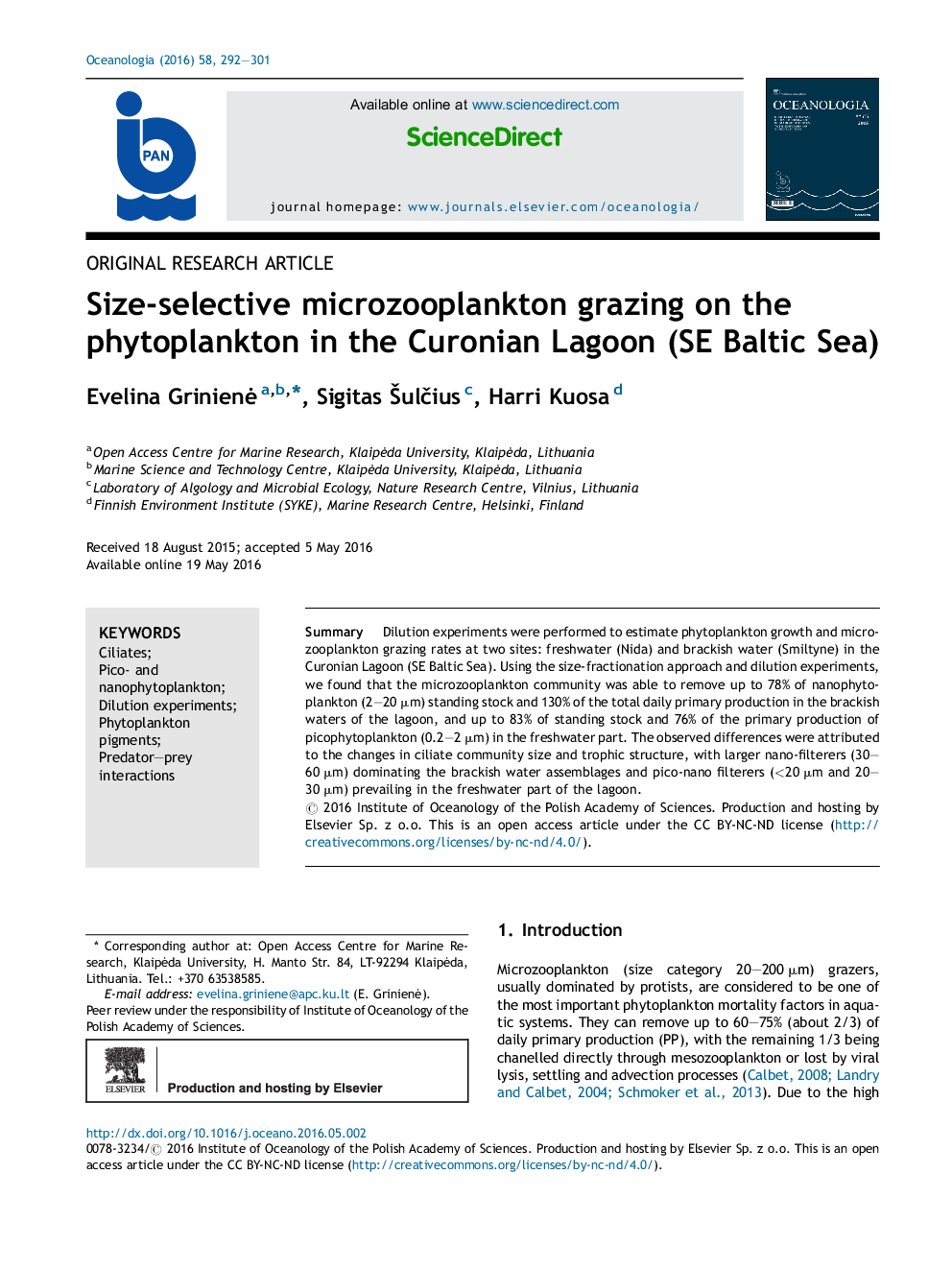| Article ID | Journal | Published Year | Pages | File Type |
|---|---|---|---|---|
| 5519740 | Oceanologia | 2016 | 10 Pages |
SummaryDilution experiments were performed to estimate phytoplankton growth and microzooplankton grazing rates at two sites: freshwater (Nida) and brackish water (Smiltyne) in the Curonian Lagoon (SE Baltic Sea). Using the size-fractionation approach and dilution experiments, we found that the microzooplankton community was able to remove up to 78% of nanophytoplankton (2-20 μm) standing stock and 130% of the total daily primary production in the brackish waters of the lagoon, and up to 83% of standing stock and 76% of the primary production of picophytoplankton (0.2-2 μm) in the freshwater part. The observed differences were attributed to the changes in ciliate community size and trophic structure, with larger nano-filterers (30-60 μm) dominating the brackish water assemblages and pico-nano filterers (<20 μm and 20-30 μm) prevailing in the freshwater part of the lagoon.
